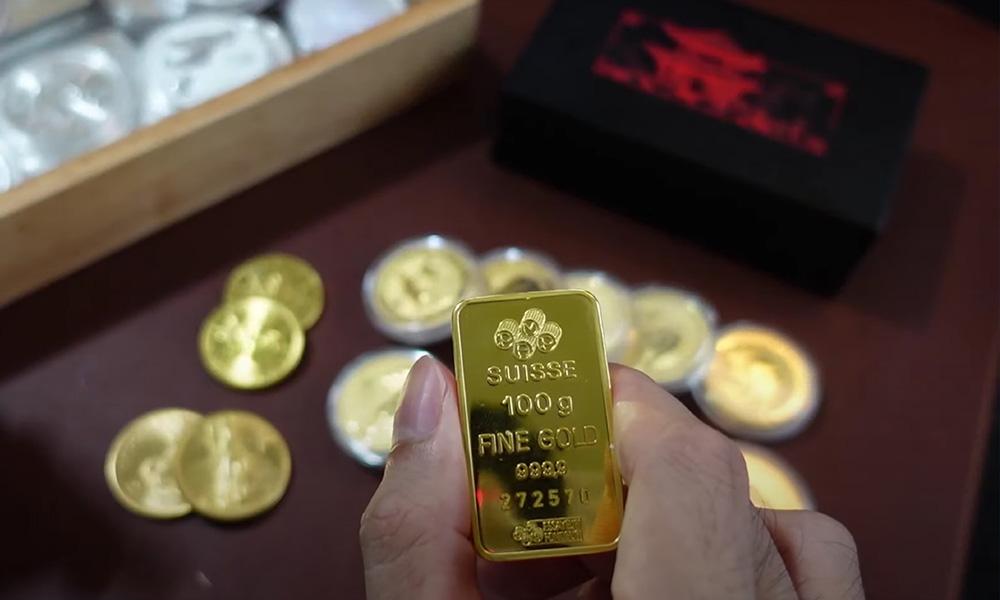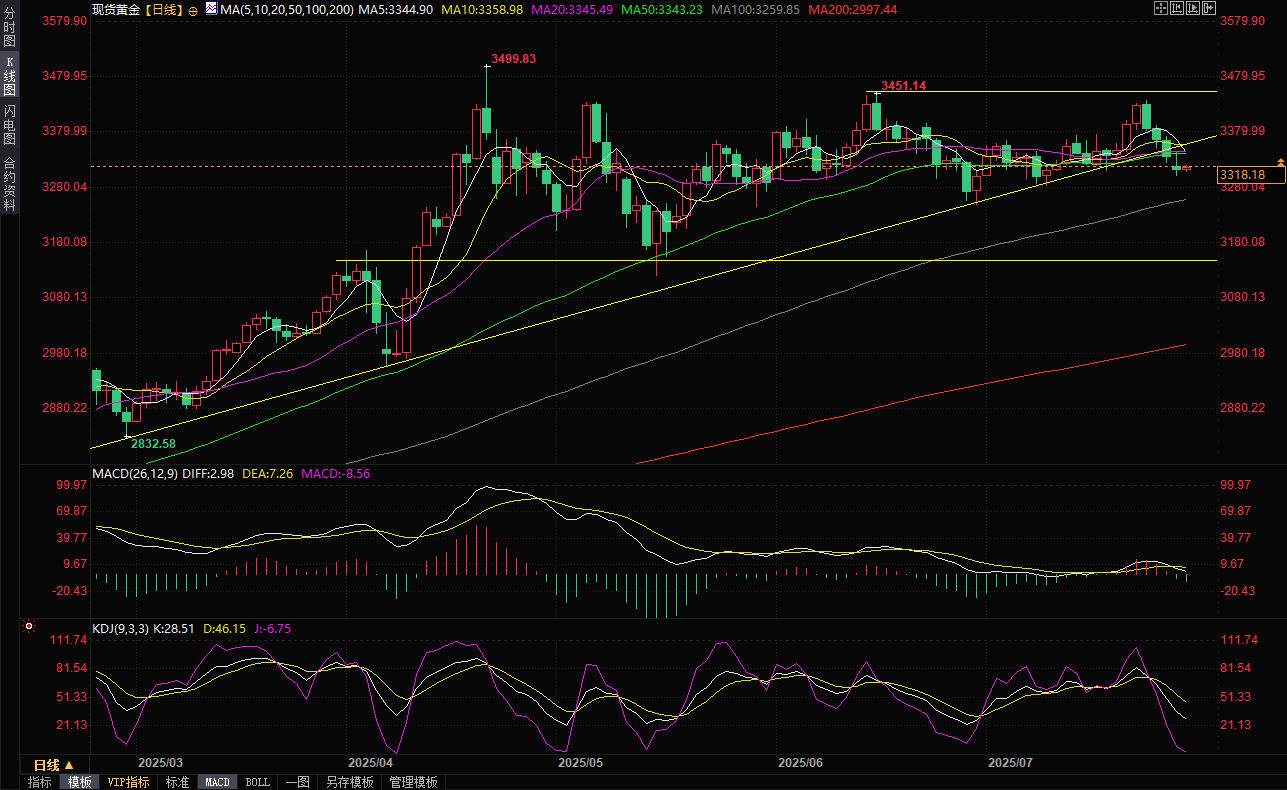Gold prices fluctuated at a three-week low, with market focus shifting to the Fed's decision and attention to the 3,300 mark support.
2025-07-29 13:37:00
Any significant pullback in the dollar seems unlikely as the market increasingly accepts the view that the Federal Reserve will maintain high interest rates for a long time. In addition, the latest trade optimism may pose a headwind for non-yielding gold prices, and traders need to remain cautious ahead of key central bank event risks. Investors will also face important US macro data releases this week, which will provide new impetus for gold prices.

Gold prices struggle amid trade optimism, dollar strength
Adding to market optimism, the trade deal reached last weekend between the United States and the European Union, as well as the U.S.-Japan agreement, eased fears of a global trade war. U.S. Treasury Secretary Scott Besant and Chinese Vice Premier He Lifeng are set to resume talks on Tuesday to resolve a long-running economic dispute and extend a three-month truce.
On Monday, the U.S. dollar recorded its biggest gain since early May and is expected to rise by nearly 1.5% in July, achieving its first monthly gain this year. This caused gold prices to fall for the fourth consecutive day, hitting a three-week low on Monday, with spot gold hitting a low of $3,301.75 per ounce. On Tuesday, the U.S. dollar bulls took a break in the Asian market, waiting for further clues on the Fed's interest rate path.
Market focus will be on the outcome of the two-day FOMC policy meeting that begins on Tuesday. The Fed is expected to keep interest rates unchanged on Wednesday, and the market will closely watch the meeting statement and Fed Chairman Powell's speech at the post-meeting press conference for new insights into the policy outlook.
Meanwhile, U.S. President Trump set a new deadline of 10 to 12 days for Russia to make progress in ending the war in Ukraine, warning of severe sanctions if no action is taken and imposing 100% secondary tariffs on countries that continue to buy Russian exports. This keeps geopolitical risks going, supporting safe-haven gold.
Traders are now focused on U.S. economic data on Tuesday, including JOLTS job openings and the Conference Board consumer confidence index. These data could impact the dollar and, combined with trade-related developments and overall risk sentiment, provide short-term trading opportunities for gold prices.
Gold Price Technical Analysis
From a technical perspective, gold prices have recently encountered resistance near $3,435, forming a multiple top pattern on the daily chart. Oscillators on the daily chart have just begun to gain negative momentum, supporting expectations of further declines in gold prices. A sustained break below the $3,300 mark would confirm the bearish view and potentially accelerate the decline towards support levels between $3,260 and $3,255. This area coincides with the 100-day simple moving average (SMA), a key support level. A decisive break below this level would provide a new trigger for bearish traders.
Conversely, any meaningful recovery attempt is likely to face resistance in the $3,340 area, with a breakout potentially pushing gold to $3,368. A sustained breakout above the latter level could trigger a short-covering rally, sending gold prices back above the $3,400 mark. Further positive momentum may be limited by strong resistance at $3,435. However, a sustained breakout would reverse the short-term bearish outlook and pave the way for a challenge to the all-time high near the psychological $3,500 level reached in April.

(Spot gold daily chart, source: Yihuitong)
At 13:35 Beijing time, spot gold was trading at $3317.80 per ounce.
- Risk Warning and Disclaimer
- The market involves risk, and trading may not be suitable for all investors. This article is for reference only and does not constitute personal investment advice, nor does it take into account certain users’ specific investment objectives, financial situation, or other needs. Any investment decisions made based on this information are at your own risk.





















